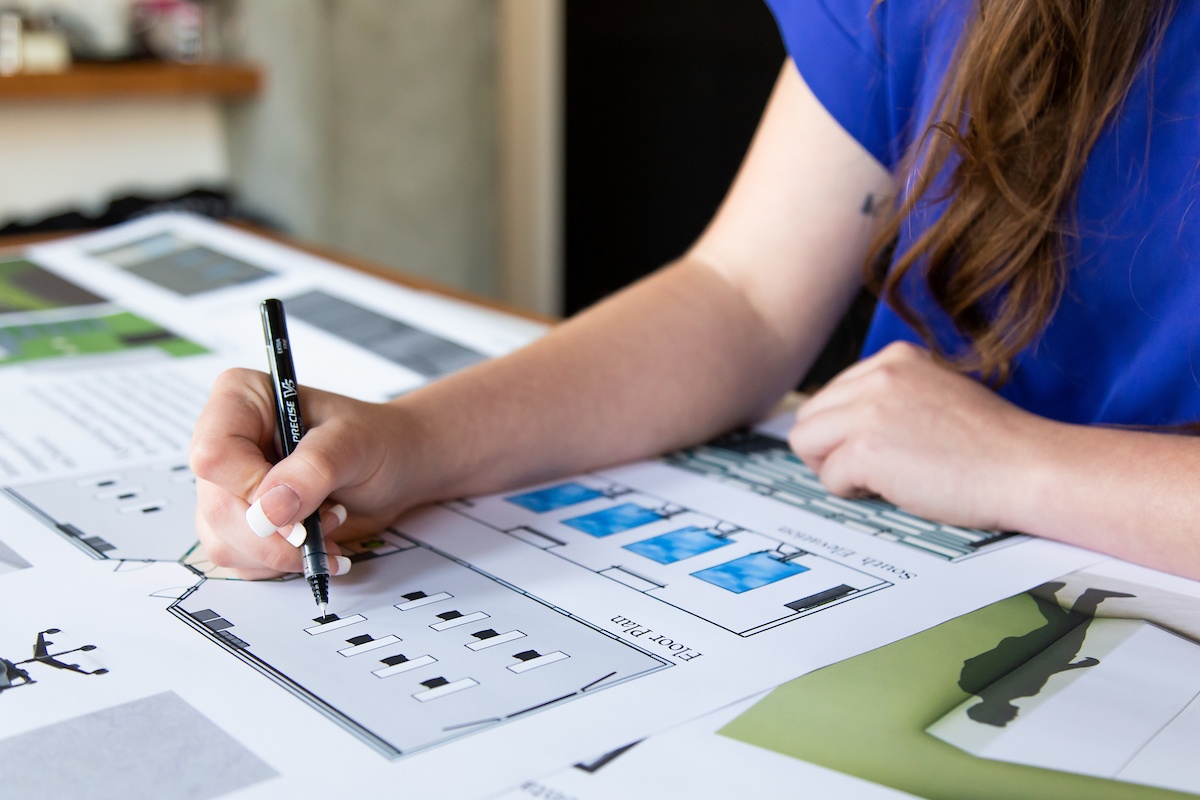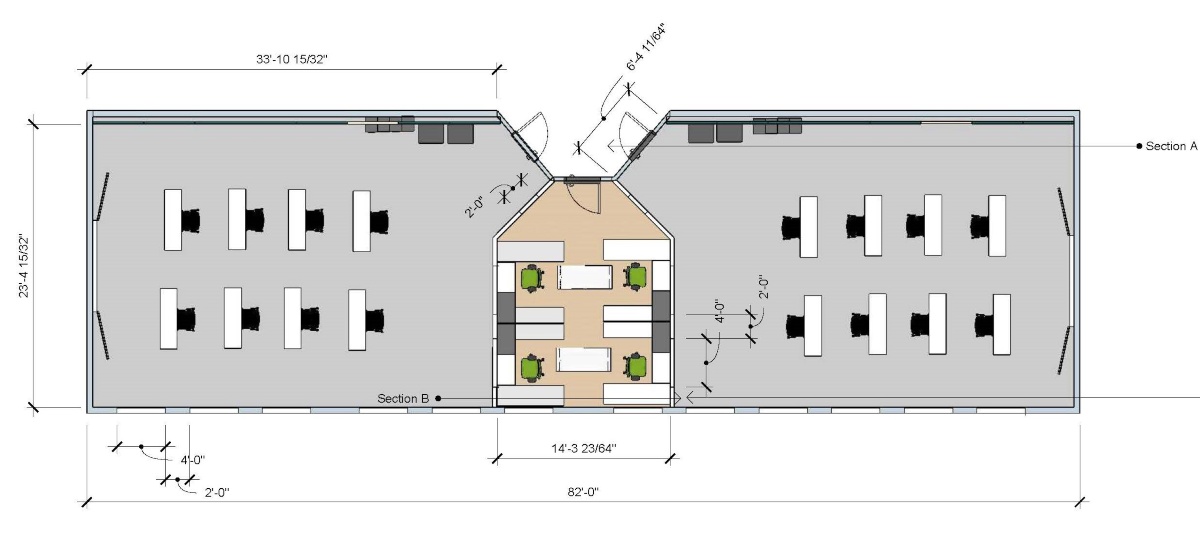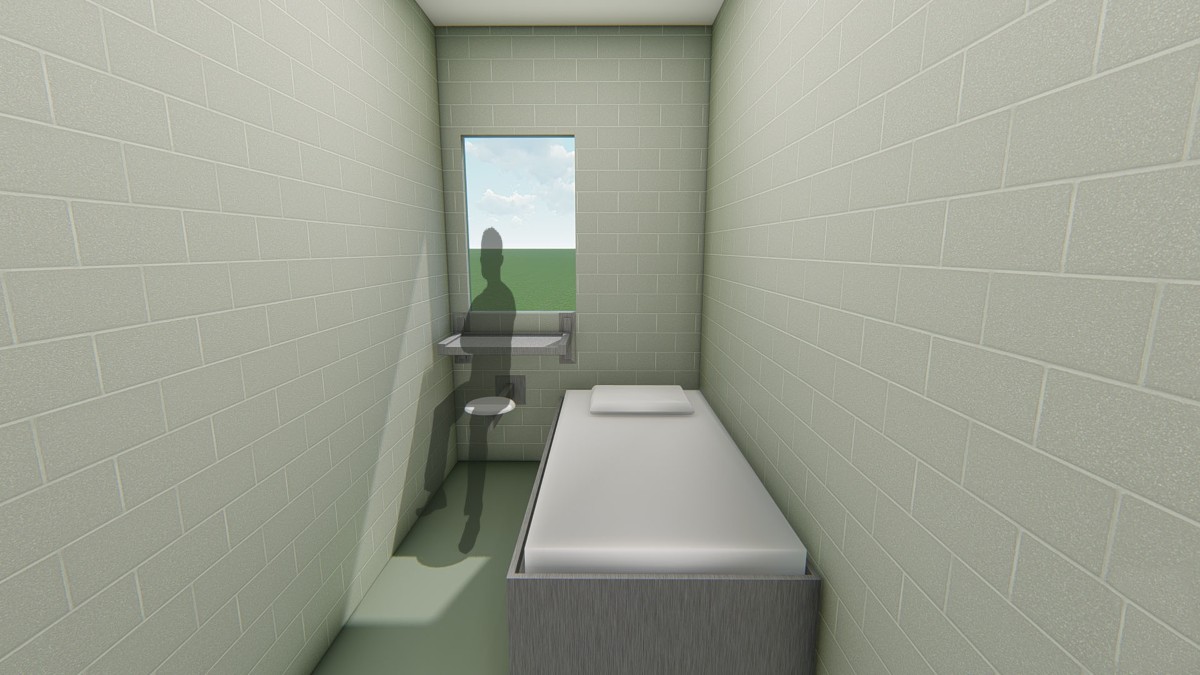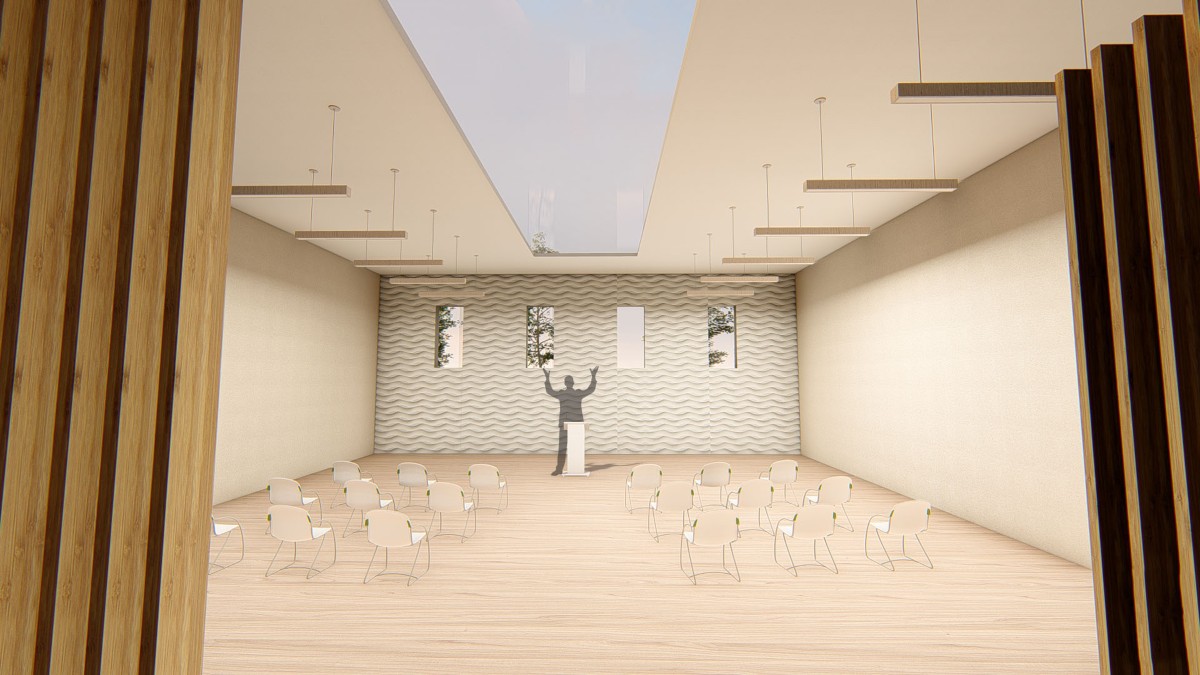Interior Architecture and Design Student Strives to Reduce Youth Recidivism Rate through Design
Emma Poe uses color theory and natural light to create re-design concepts for Lewiston’s Juvenile Corrections Center.
Emma Poe has heard frequent stories from family members about their past experiences behind bars.
Most revolve around overcrowding and subpar facilities — common issues in a country with the world’s highest per-capita incarceration rate.
“I think the main thing was the loss of any form of privacy, and other inmates’ attitudes rubbed off on theirs — or vice versa,” said Poe, who’s pursuing a bachelor’s in interior architecture and design from U of I’s College of Art and Architecture. ”Maybe you just had a great therapy session and you’re having a great day, and then you’re stuck with your bunkmate who has a terrible attitude, and it just brings you back down.”
When choosing a design concept for her senior capstone project in the Interior Architecture and Design Program, Poe focused on theories of rehabilitation versus confinement, striving to emphasize how an inmate’s physical environment can positively impact personal growth.
The trends surrounding youth incarceration and recidivism caught Poe’s eye.
The 2015 report from the Council of State Governments Justice Center highlights that juveniles are “far more likely than adults to reoffend after their release across all states.” Of the 39 states that track recidivism rates, the one with the highest rate of juvenile offenders reported 76 percent re-offend within three years and 84 percent re-offend within five years.
We need to encourage these kids to become the best versions of themselves so they don’t end up incarcerated later. Emma Poe
Poe was baffled. She reached out to the Idaho Department of Juvenile Corrections Center in Lewiston with hopes of having a positive impact.
“A lot of juveniles have family issues and they’re looking for a reason to escape, so they act out and get involved in drugs. We need to encourage these kids to become the best versions of themselves so they don’t end up incarcerated later,” Poe said.


Nature’s Rehabilitative Prowess
Soon, Poe’s design project was underway. The 22-year-old from Hailey connected with Kelly Stevens, the senior maintenance craftsman at Lewiston’s Juvenile Corrections Center, which houses boys and young men ages 13-18, often with significant substance abuse issues.
After touring the facility, Poe felt driven to re-design the correction center’s outdoor space. So she created concepts for a garden that, according to research, would likely lead to decreased anxiety and an increase in self-worth — the result of newly acquired skills and the satisfaction of growing food for communal consumption.
Poe’s inspiration came from a family member who, after being locked up with limited access to the outdoors, transferred to a facility with a similar gardening program and was soon excited to wake up in the morning.
“Just letting the sun hit your skin, or doing things with your hands that means something, producing food for the people around you — it’s having that sense of purpose,” Poe said.
Near the proposed garden, and next to the existing basketball courts, Poe designed an outdoor visitation area where inmates could meet family members in a more private setting.
Thanks in part to Poe’s ideas, the correction center is now extending its outside basketball court by about 20 feet, Stevens said, and may plant trees in the lawn area for possible outside visitation.
“I was very impressed by Emma’s designs, and I explained some of her ideas to my superintendent,” Stevens said. “He was excited to hear about them and said he wants to share some of the ideas with our deputy director.”



Natural Light and Color Theory
Inside the facility, Poe focused on the educational and spiritual spaces.
“I stood in an empty cell and walked through all the halls and existing classrooms,” Poe said. “I was able to get the feeling of being crammed in their little classrooms with no windows. The ceilings are about 10 feet tall, so the classrooms feel like small boxes. They cram about five teachers, side by side, into a tiny hallway that separates the classrooms.”
I stood in an empty cell and walked through all the halls and existing classrooms. I was able to get the feeling of being crammed in their little classrooms with no windows.” Emma Poe
The hallway, Poe said, serves as the teacher prep space, which allows for three and a half to four feet per teacher, along with their individual computers, desks and chairs.
“Kelly said that if anything needed to be changed, it was the classrooms and teacher prep space,” Poe said. “The teachers are the ones who are supposed to inspire students, but if they don’t feel inspired themselves, how are they supposed to do that? Kelly didn’t want the classroom to be a negative space.”
Poe’s research revealed that natural light often encourages learning and inspires students to feel more comfortable. So she proposed moving the classrooms and teacher prep space to a newly designed wing. Then she enlarged the space and added large windows that would uphold regulatory safety and fire standards, but wouldn’t require wire framing. She also used color theory — the notion that color can influence people’s perceptions and behaviors — and chose cool green and blue hues for the walls.
“I brought the idea to Kelly that it doesn’t have to be too expensive, but research tells us that the color green inspires growth,” Poe said. “And there’s a connection to nature.”
Now working as a junior designer at a firm in Ketchum, Poe said she may someday return to the world of incarceration design.
“The main design challenge that I had with this project, which I thought was fascinating, was the limitations,” Poe said. “Knowing the limitations were there because of an inmate’s safety, not just because the client doesn’t like the color blue, made this project really meaningful. I had to get creative about what I could put in spaces that would still make them inspirational, and still make for good design.”
Article by Kate Keenan, College of Art and Architecture
Published September 2019











